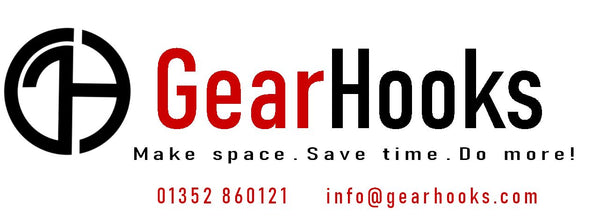
Top Tips For Decluttering & Organising Your Garden Shed
Share
The garden shed can all too easily turn into a cobweb strewn clutter-bomb that makes it impossible to find what you need. Poorly stored tools and equipment can cause damage and reduce their effectiveness and lifespan. It also makes your shed a hazardous space where you or your family could be at risk of trips and impacts from falling objects.
If you can’t see the tools you need, it can be frustrating and make chores such as gardening take up more of your time. You may even end up buying duplicates of items that you had forgotten you owned because they are buried under piles of junk. Here are some handy tips to help you get your shed looking shipshape.
Take everything out
First of all, clear out the entire contents of your shed. This will help take stock of the items you have, and is an opportunity to repair or replace damaged items. If you no longer need an item, sell it, give it away or recycle it rather than keeping it ‘just in case.’ Sheds can often be a graveyard of empty tins, broken planters etc. that are using up valuable storage room.
Once you have decided what you are keeping, group items into similar categories, such as rakes, hoes, forks, spades and so on. This will help you decide where to store them and how much space to allocate them.
Assess your space and install storage systems
Measure up the dimensions of your shed to help inform your storage solutions. If your shed is small or you have a lot of stuff, make use of the wall and ceiling space to install shelving, storage hooks and racks. These not only save space, but also allow you to store tools such as spades, shears and loppers neatly and safely off the ground.
Lighter items such as watering cans and hoses can be suspended from the ceiling, while racks can be used to store items that don’t have handles such as gloves and other protective gear. Shelves are ideal for potted plants, seeds, fertilisers and bird food.
Consider a workbench
If you have enough room, a workbench will be very useful for carrying out tasks such as potting plants and repairing tools. You can use the space underneath to create cupboards, drawers, or extra shelves.
Zone your storage areas
Consider zoning your shed into areas such as items you use frequently, which should be placed where they are easy to access, heavy items that should be stored closer to the ground, and items that you use infrequently or seasonally, and can be stored towards the back or higher up.
Hazardous items such as pesticides and tools with sharp edges should be stored out of reach of children and pets.
If you have a lot of smaller odds and ends, place them in clearly labelled containers in drawers or on shelves so that you can easily locate what you need and keep track of your stock.
More Information
If you are interested in the benefits of houseplants click this link.

